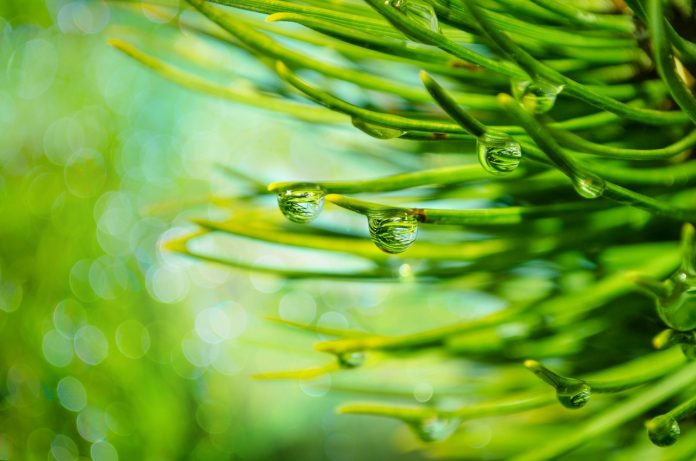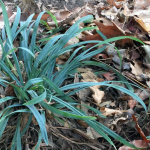Autumn is the perfect time to start thinking about improving your winter landscape. Once you’ve cut back your perennials, composted your annuals and cleaned up your vegetable garden, you aren’t left with much green. After the leaves fall off the trees things start looking even barer. Before the snow gets here, take time to plant some evergreens that will keep your interest this winter and benefit the local wildlife.
Layers
To create a landscape that offers year-round seasonal interest and benefits wildlife, it’s important to remember a system that supports animal diversity has four layers. Incorporating just a few native evergreens will add seasonal interest to your landscape, but considering layers as you go will improve your display and enhance its benefits to the local wildlife.
Groundcover Level
The first of the four layers you want to think of filling is groundcover level, also called the herbaceous level. You can try the following evergreens to add some color to your winter garden on the ground cover level:
Christmas Fern. The Christmas Fern is native to drier woodland sites and doesn’t need the moisture other ferns require. At a mature height of one to two feet tall, this evergreen stands up to snow and compliments shaded, naturalized or formal landscapes.
Seersucker Sedge. This sedge features shiny, wide, bright green leaves with a puckered and wavy texture. It will grow anywhere from six to 12 inches tall in full to partial shade with moist soil but can survive in almost any part of your garden. It’s interesting color and texture will add a new element to your winter garden.
Spreading Sedge. The Spreading Sedge also has a unique appearance with grass-like, silvery blue foliage. It will also add color and texture to your landscape throughout the winter. This evergreen will flourish in a shaded area.
Shrub Level
Next, you need to select plants for the shrub level. Consider the following native evergreens on the shrub level:

Mountain Laurel. The Mountain Laurel is a shade tolerant native evergreen, featuring beautiful pink and white flowers in the spring and broad green leaves throughout the rest of the year. It grows best in moist acidic soils with high organic matter. Keep the roots cool by providing some mulch.
Inkberry. The Inkberry is a slow-growing evergreen holly with small elliptical green leaves. Plant the Inkberry in full sun to partial shade in moist soil. The plant is not very showy and known for getting naked lower stems with age. However, it produces black berries that wildlife enjoy. Planting an evergreen sedge below the Inkberry can help cover its bare knees.
Understory Level

The understory level is next on the list, and the Rosebay Rhododendron is a good choice ascetically and to benefit wildlife. Reaching heights of up to 30 feet tall, it supports a wide array of wildlife and produces large pink flowers during the summer months. It flourishes in cool, moist environments.
Canopy Level
The final layer you need to consider is the canopy level. Including evergreen trees in your landscape provides greenery year round, benefits pollinators by acting as a host plant for many butterflies and moths, creates a habitat for beneficial insects and provides food and a habitat for birds and other wildlife.
Some native evergreen trees you may want to consider planting include:

American Holly. Featuring smooth grey bark, spiny green leaves, and red berries into the winter, the American Holly tree can add some color to your landscape and provide food and shelter for songbirds, game birds, deer, foxes and small mammals. It is also a host to over 33 types of butterflies and moths. It does well in moist, acidic soils, and requires a male nearby to ensure continued berry production.

Eastern Red Cedar. The Eastern Red Cedar is one of the most beneficial trees for wildlife. It provides good cover to shelter smaller mammals and birds and produces blue berries through winter. It’s a host to over 25 species of butterflies and moths, and it has been known to benefit deer, birds, rabbits, pheasants, squirrels, chipmunks and variety of other native animals. While it is tolerant of a wide variety of soil moisture and pH, the Eastern Red Cedar requires good sunlight to flourish.

Eastern White Pine. The Eastern White Pine can grow to more than 100 feet tall and is a fast grower. Before planting one in your yard, make sure you have plenty of space. It prefers well-drained slightly acidic soils but is more tolerant of soil moisture than other native evergreens. It features feathery needles that soften the landscape.













